Stabilization of Underactuated Surface Vessels: A Continuous Fractional Power Control Method
Abstract
1. Introduction
1.1. Background Material
1.2. Formulation of the Problem of Interest for This Investigation
1.3. Literature Survey
1.4. Scope and Contribution of This Study
- (1)
- For the transformed system, a novel continuous fractional power control framework is derived by combining the fractional power control scheme with the Lyapunov method and Barbalat Lemma, which can globally asymptotically stabilize the USVs. What makes the framework interesting is that, compared with the backstepping method, there is no need for the above controller to track any smooth state trajectories, so that the fractional power term can be used to improve the convergence rate (especially near the origin).
- (2)
- Then for the aforementioned controller, the effects of parameters on the convergence rate are analyzed, which shows that we can improve the rate both near and far from the origin by adjusting the fractional power term. On this basis, we construct a continuous control algorithm of the USVs and prove that the control algorithm can improve the overall convergence rate. The presented fractional power control method is simpler and faster near the origin than methods in references [10,11,12].
1.5. Organization of the Paper
2. System Modeling and the Objective
2.1. Modeling
2.2. The Objective
2.3. Model Transformation
3. Main Results
3.1. A Continuous Fractional Power Control Framework
3.2. Convergence Analysis
3.3. Fast Convergence Control Law
3.4. The Control Algorithm for USVs
- , , , and are constants to be chosen, andwith and are such that .
| Algorithm 1: The continuous control algorithm of USVs. |
Step 1. Choose parameters , , , , , , and initial values of x, y, , u, v, r. Step 2. Let , , and . Step 3. Make state transformation , , , , as , , , , , . Step 4. Calculate the parameters and , . Step 5. Compute virtual control inputs and Step 6. Take measurements , , , , , , , , , of the USV. Step 7. Compute virtual control inputs and , . Step 8. Compute real control inputs and -, . |
4. Numerical Simulations
4.1. Stability
4.2. Comparison of Convergence Rate
4.3. Comparison of Performance and Control Energy
5. Conclusions and Future Work
Author Contributions
Funding
Conflicts of Interest
Appendix A. Uniform Continuity of
Appendix B. Uniform Continuity of
Appendix C. Uniform Continuity of
References
- Pettersen, K.Y.; Egeland, O. Exponential stabilization of an underactuated surface vessel. In Proceedings of the 35th IEEE Conference on Decision and Control, Kobe, Japan, 13 December 1996; Volume 1, pp. 967–972. [Google Scholar]
- Brockett, R.W.; Millman, R.S.; Sussmann, S.J. Asymptotic stability and feedback stabilization. Differ. Geometr. Control Theory 1983, 27, 181–191. [Google Scholar]
- Oriolo, G.; Nakamura, Y. Control of mechanical systems with second-order nonholonomic constraints: Underactuated manipulators. In Proceedings of the 30th IEEE Conference on Decision and Control, Brighton, UK, 11–13 December 1991; pp. 2398–2403. [Google Scholar]
- Reyhanoglu, M. Control and stabilization of an underactuated surface vessel. In Proceedings of the 35th IEEE Conference on Decision and Control, Kobe, Japan, 13 December 1996; Volume 3, pp. 2371–2376. [Google Scholar]
- Pettersen, K.Y.; Fossen, T.I. Underactuated dynamic positioning of a ship-experimental results. IEEE Trans. Control Syst. Technol. 2000, 8, 856–863. [Google Scholar] [CrossRef]
- Ghommam, J.; Mnif, F.; Benali, A.; Derbel, N. Asymptotic backstepping stabilization of an underactuated surface vessel. IEEE Trans. Control Syst. Technol. 2006, 14, 1150–1157. [Google Scholar] [CrossRef]
- Ma, B.L. Global κ-exponential asymptotic stabilization of underactuated surface vessels. Syst. Control Lett. 2009, 58, 194–201. [Google Scholar] [CrossRef]
- Zhang, Z.; Wu, Y. Switching-based asymptotic stabilisation of underactuated ships with non-diagonal terms in their system matrices. IET Control Theory Appl. 2014, 9, 972–980. [Google Scholar] [CrossRef]
- Pettersen, K.Y.; Nijmeijer, H. Semi-global practical stabilization and disturbance adaptation for an underactuated ship. In Proceedings of the 39th IEEE Conference on Decision and Control, Sydney, Australia, 12–15 December 2000; Volume 3, pp. 2144–2149. [Google Scholar]
- Mazenc, F.; Pettersen, K.Y.; Nijmeijer, H. Global uniform asymptotic stabilization of an underactuated surface vessel. IEEE Trans. Autom. Control 2002, 47, 1759–1762. [Google Scholar] [CrossRef]
- Pettersen, K.Y.; Mazenc, F.; Nijmeijer, H. Global uniform asymptotic stabilization of an underactuated surface vessel: experimental results. IEEE Trans. Control Syst. Technol. 2004, 12, 891–903. [Google Scholar] [CrossRef]
- Dong, W.J.; Yi, G. Global time-varying stabilization of underactuated surface vessel. IEEE Trans. Autom. Control 2005, 50, 859–864. [Google Scholar] [CrossRef]
- Samson, C. Control of chained systems application to path following and time-varying point-stabilization of mobile robots. IEEE Trans. Autom. Control 1995, 40, 64–77. [Google Scholar] [CrossRef]
- Ma, B.L.; Xie, W.J. Global asymptotic trajectory tracking and point stabilization of asymmetric underactuated ships with non-diagonal inertia/damping matrices. Int. J. Adv. Robot. Syst. 2013, 10, 336. [Google Scholar]
- Zhang, Z.; Wu, Y. Further results on global stabilisation and tracking control for underactuated surface vessels with non-diagonal inertia and damping matrices. Int. J. Control 2015, 88, 1679–1692. [Google Scholar] [CrossRef]
- Xie, W.J.; Ma, B.L. Robust global uniform asymptotic stabilization of underactuated surface vessels with unknown model parameters. Int. J. Robust Nonlinear Control 2015, 25, 1037–1050. [Google Scholar] [CrossRef]
- Qian, C.; Lin, W. A continuous feedback approach to global strong stabilization of nonlinear systems. IEEE Trans. Autom. Control 2001, 46, 1061–1079. [Google Scholar] [CrossRef]
- Wang, Z.; Li, S.H.; Fei, S. Finite-time tracking control of a nonholonomic mobile robot. Asian J. Control 2009, 11, 344–357. [Google Scholar] [CrossRef]
- Li, S.H.; Ding, S.H.; Tian, Y. A finite-time state feedback stabilization method for a class of second order nonlinear systems. Acta Autom. Sin. 2007, 33, 101. [Google Scholar] [CrossRef]
- Serrano, M.E.; Scaglia, G.J.; Godoy, S.A.; Mut, V.; Ortiz, O.A. Trajectory tracking of underactuated surface vessels: A linear algebra approach. IEEE Trans. Control Syst. Technol. 2014, 22, 1103–1111. [Google Scholar] [CrossRef]
- Fossen, T.I. Marine Control Systems: Guidance, Navigation and Control of Ships, Rigs and Underwater Vehicles; Marine Cybernetics: Trondheim, Norway, 2002. [Google Scholar]
- Fossen, T.I. Guidance and Control of Ocean Vehicles; John Wiley & Sons Inc.: Hoboken, NJ, USA, 1994. [Google Scholar]
- Pettersen, K.Y. Exponential Stabilization of Underactuated Vehicles; Norwegian University of Science Technology: Trondheim, Norway, 1996. [Google Scholar]
- Do, K.D.; Pan, J. Global tracking control of underactuated ships with nonzero off-diagonal terms in their system matrices. Automatica 2005, 41, 87–95. [Google Scholar]
- Slotine, J.; Li, W. Applied Nonlinear Control; Prentice Hall: Englewood Cliffs, NJ, USA, 1991. [Google Scholar]
- Do, K.D.; Pan, J. Underactuated ships follow smooth paths with integral actions and without velocity measurements for feedback: Theory and experiments. IEEE Trans. Control Syst. Technol. 2006, 14, 308–322. [Google Scholar] [CrossRef]
- Guida, D.; Pappalardo, C.M. Forward and inverse dynamics of nonholonomic mechanical systems. Meccanica 2014, 49, 1547–1559. [Google Scholar] [CrossRef]
- Pappalardo, C.M.; Guida, D. Use of the Adjoint Method for Controlling the Mechanical Vibrations of Nonlinear Systems. Machines 2018, 6, 19. [Google Scholar] [CrossRef]
- Pappalardo, C.M.; Guida, D. Control of nonlinear vibrations using the adjoint method. Meccanica 2017, 52, 2503–2526. [Google Scholar] [CrossRef]
- Pappalardo, C.M.; Guida, D. Adjoint-based optimization procedure for active vibration control of nonlinear mechanical systems. J. Dyn. Syst. Meas. Control 2017, 139, 081010. [Google Scholar] [CrossRef]
- Pappalardo, C.M.; Patel, M.D.; Tinsley, B.; Shabana, A.A. Contact force control in multibody pantograph/ catenary systems. Proc. Inst. Mech. Eng. Part K 2016, 230, 307–328. [Google Scholar] [CrossRef]
- Guida, D.; Pappalardo, C.M. Control design of an active suspension system for a quarter-car model with hysteresis. J. Vib. Eng. Technol. 2015, 3, 277–299. [Google Scholar]
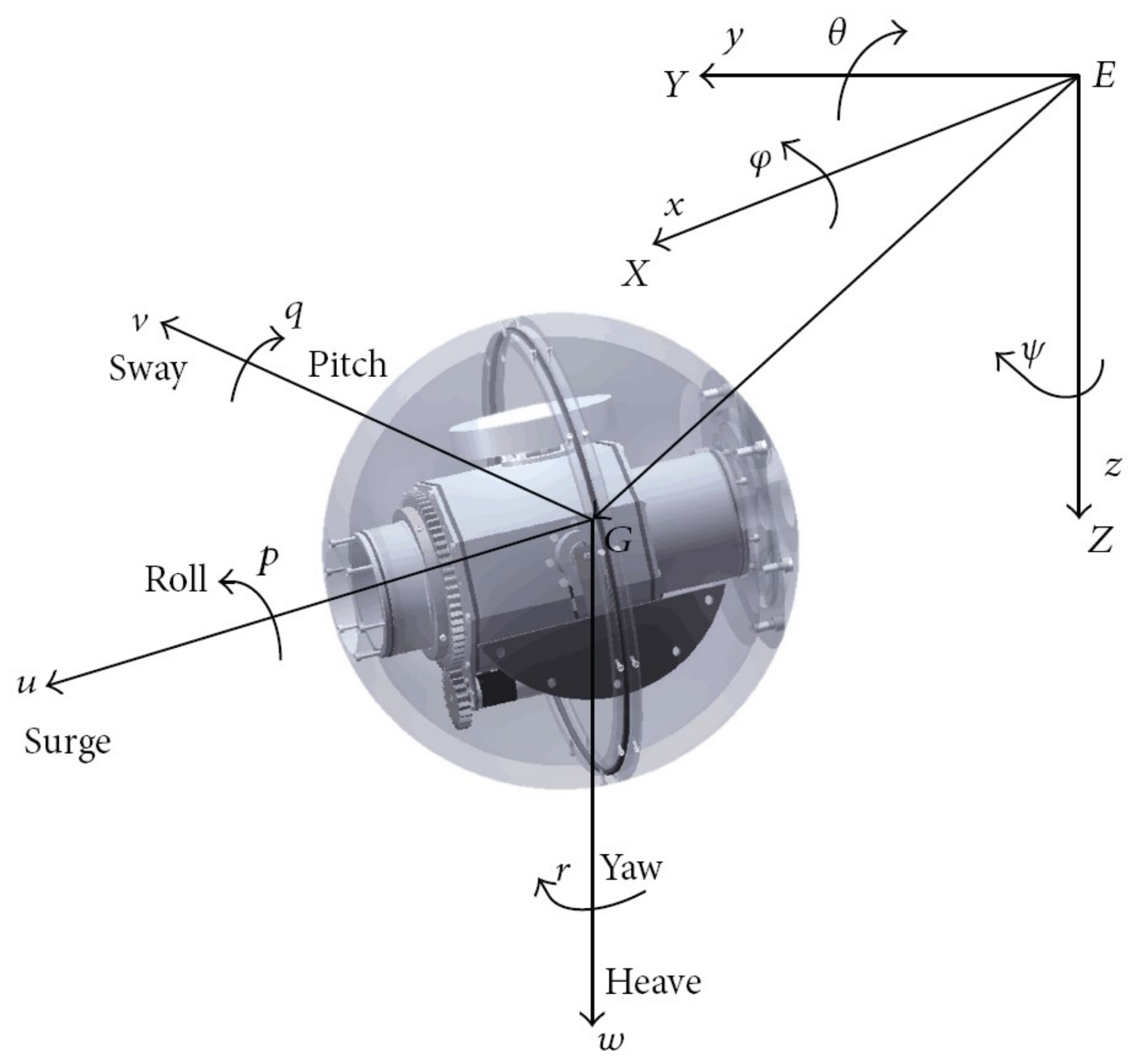

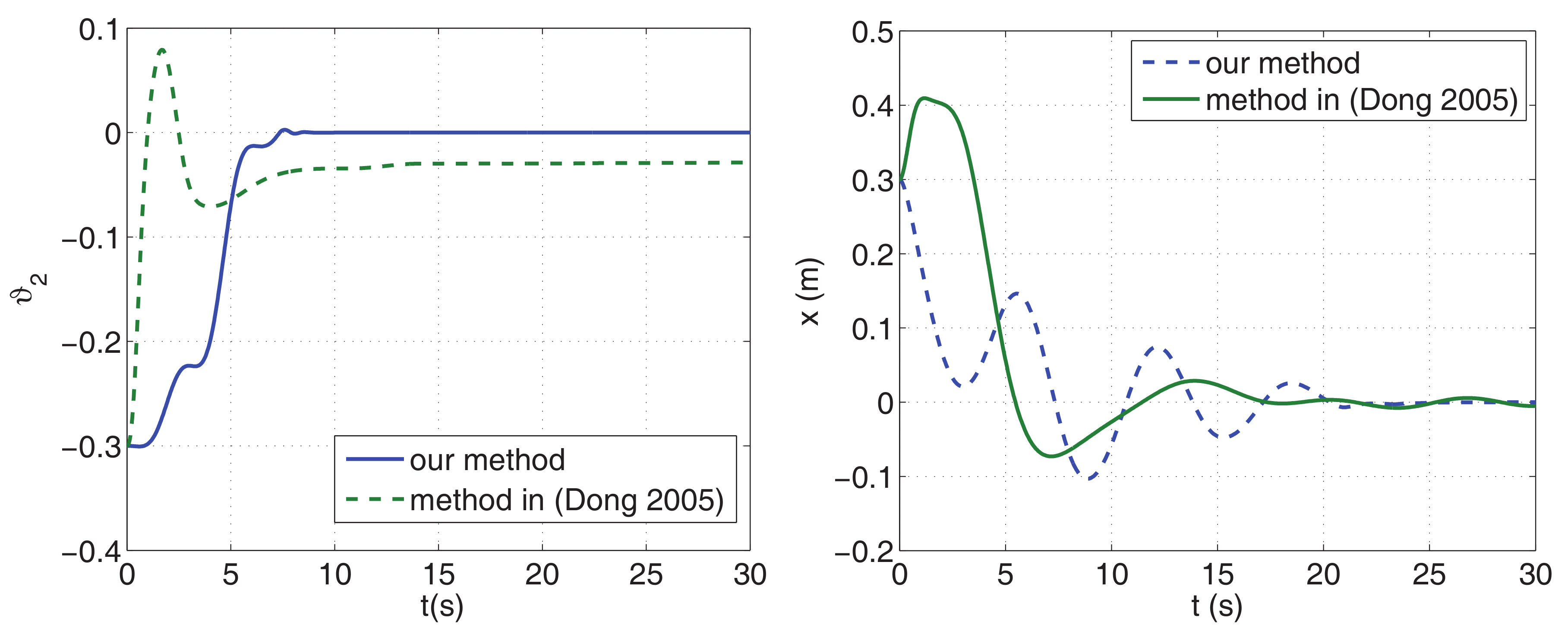
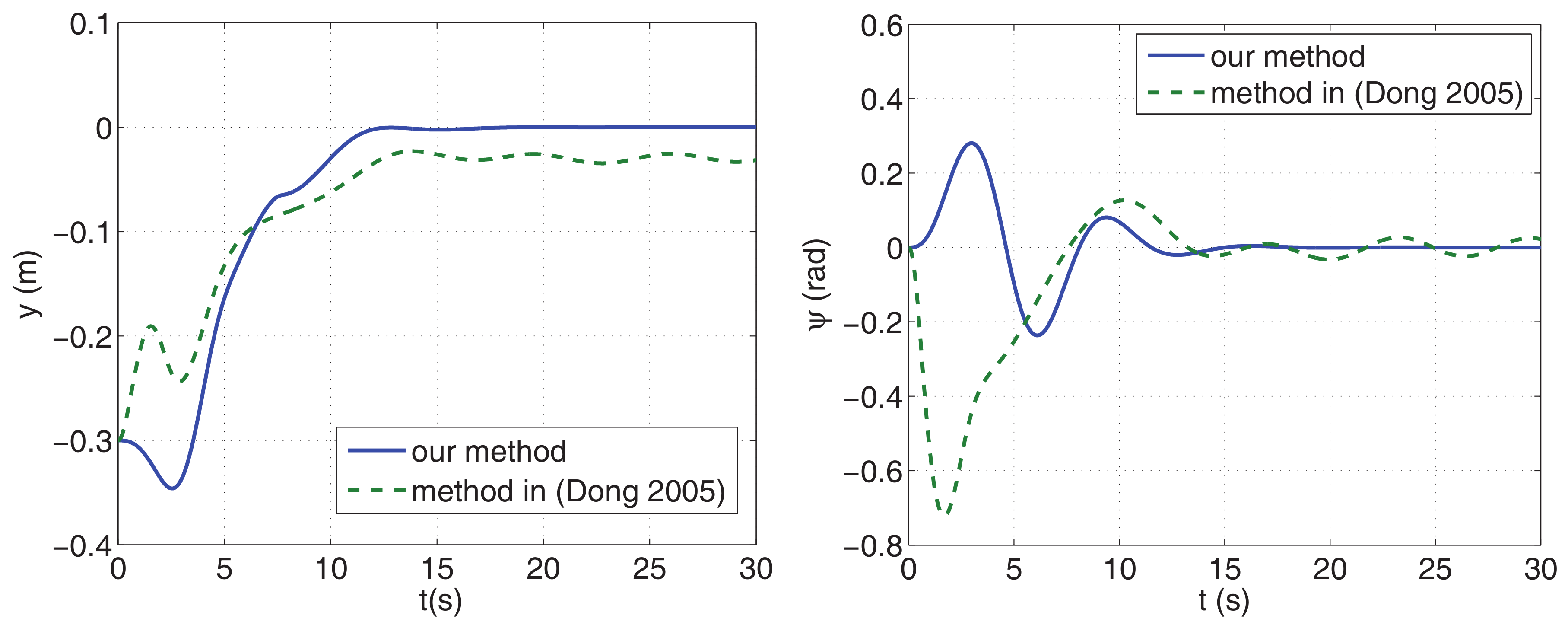
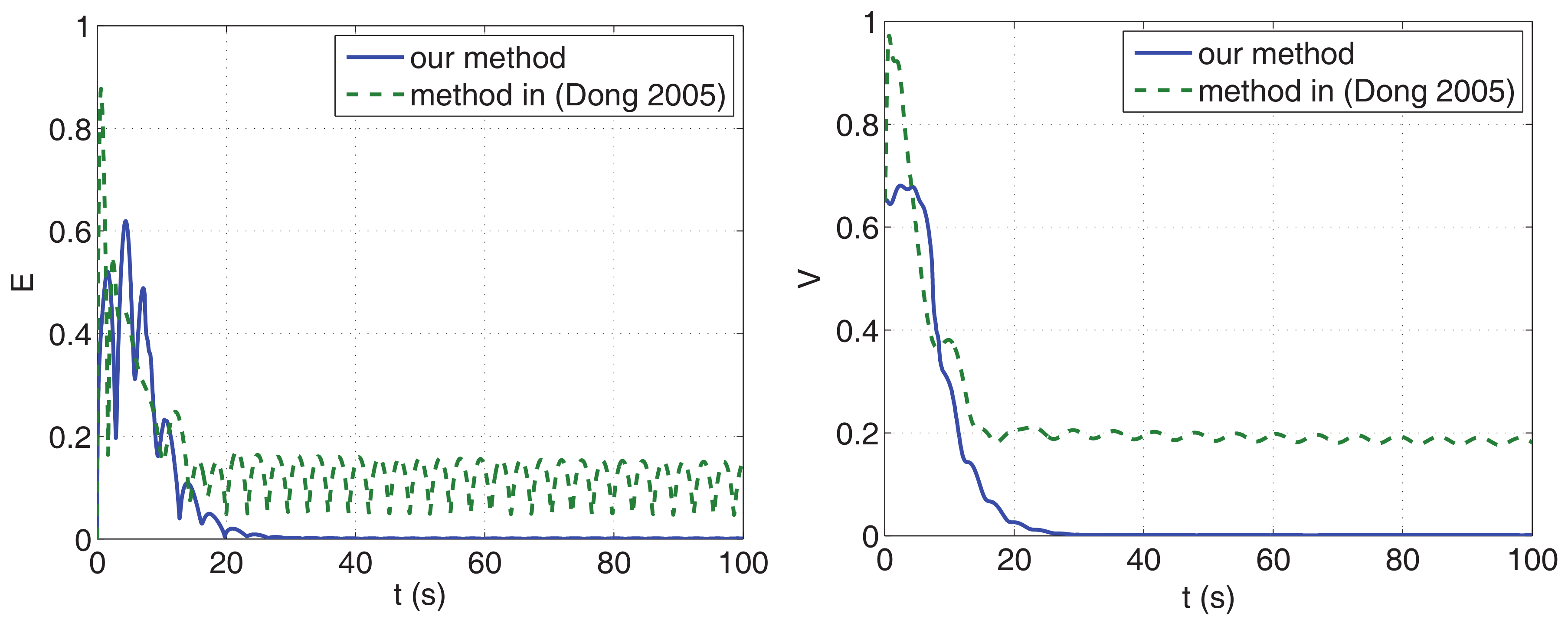
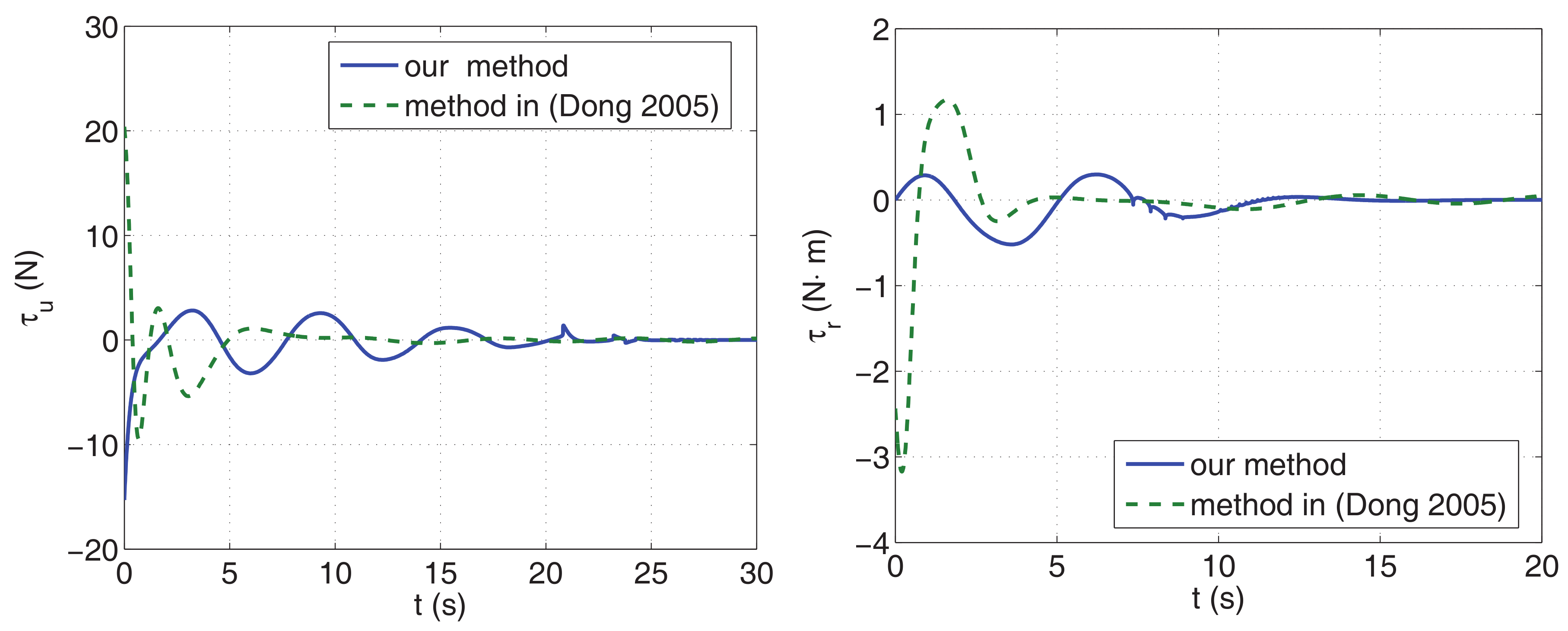
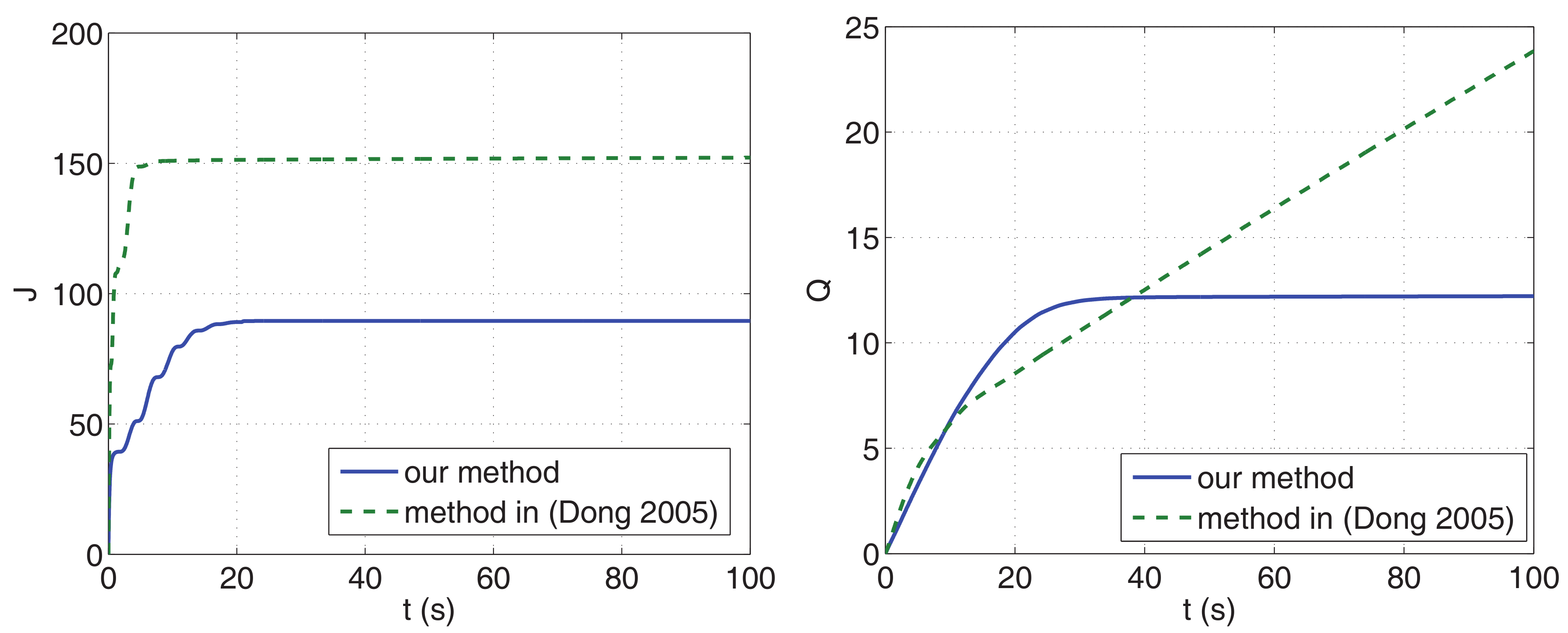
| 3 | 3 | 1 | 1 | 0.5 | 25.8 | 33.8 | ||
| 2.76 | 6.2 | 6.2 | 17 | 0.5 |
© 2018 by the authors. Licensee MDPI, Basel, Switzerland. This article is an open access article distributed under the terms and conditions of the Creative Commons Attribution (CC BY) license (http://creativecommons.org/licenses/by/4.0/).
Share and Cite
Zhang, P.; Guo, G. Stabilization of Underactuated Surface Vessels: A Continuous Fractional Power Control Method. Appl. Sci. 2018, 8, 1024. https://doi.org/10.3390/app8071024
Zhang P, Guo G. Stabilization of Underactuated Surface Vessels: A Continuous Fractional Power Control Method. Applied Sciences. 2018; 8(7):1024. https://doi.org/10.3390/app8071024
Chicago/Turabian StyleZhang, Pengfei, and Ge Guo. 2018. "Stabilization of Underactuated Surface Vessels: A Continuous Fractional Power Control Method" Applied Sciences 8, no. 7: 1024. https://doi.org/10.3390/app8071024
APA StyleZhang, P., & Guo, G. (2018). Stabilization of Underactuated Surface Vessels: A Continuous Fractional Power Control Method. Applied Sciences, 8(7), 1024. https://doi.org/10.3390/app8071024






